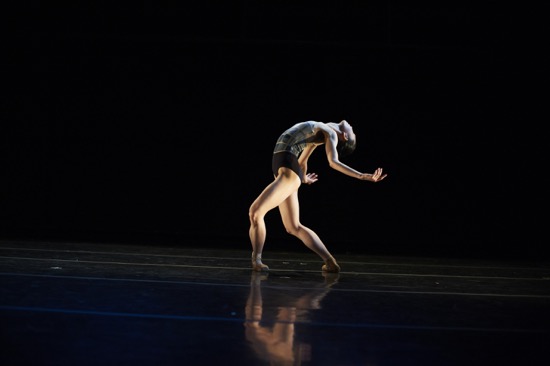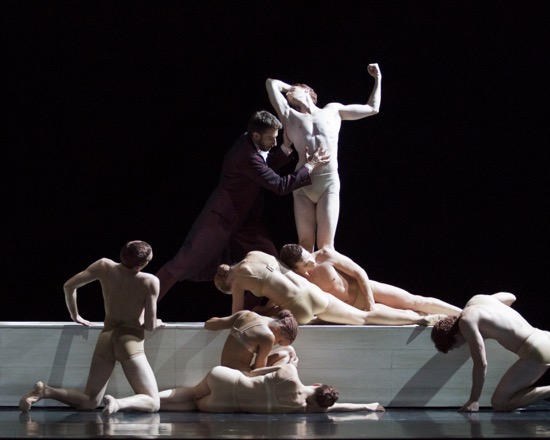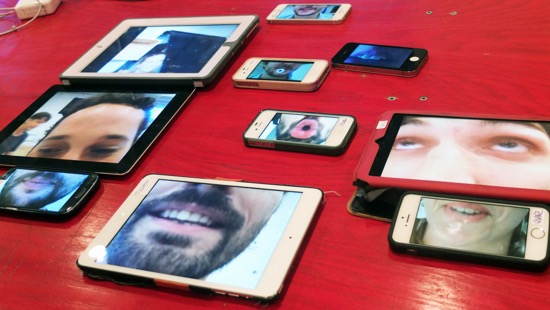
I’ve known Peter Quanz since our ballet training years at Canada’s Royal Winnipeg Ballet Professional Division. I have always admired Peter for his courage as a choreographer in taking on supreme artistic challenges and creating inventive, thought-provoking art. It has been a joy to see Peter succeed in what is an incredibly demanding and difficult career path.
I was thrilled that Peter agreed to share with 4dancers readers a bit about his life-changing adventures; his passion and drive for creating cutting edge choreography; and of course, his lovely humanity in connecting with artists across vastly different disciplines and languages. We spoke for about an hour over Skype while he was on a break from rehearsals. – Karen Musey

KM You have had an illustrious career and have explored many different avenues of work as a choreographer. What has prompted you to branch out?
PQ I’m very excited that I’ve been working as a choreographer now for over 20 years. And that has given me an incredible life, with experiences that I’d never expected I would encounter. I’m looking forward to more.
I’ve really tried to choose projects that scare me. If I don’t face a project in sheer terror with the feeling of “I’m not skilled enough for this”, then there’s an excitement that’s going to be missing.
KM You make bold choices and continually seek out opportunities to collaborate – how have these different experiences informed your perspective as a choreographer?
PQ I am currently collaborating with Montréal Danse for the creation of a new piece. To spark the creative genesis of the piece, Artistic Director, Kathy Casey proposed a question to me – “How would you make a dance if you didn’t consider the audience?”. That flummoxed me, because for me, one of my hang ups is trying to gauge what an audience is going to relate to. But if you always try to make something an audience will like, soon you will end up only sitting in the audience with them.
We started out with an initial two week rehearsal period. We spent the better part of it figuring out different ways of connecting as a group of people, when I suddenly realized that what was most interesting about this collaboration was the bond that we had as a team. The idea became how to find a way to create a social connection with the audience: essentially, a “social experiment”.

We are now building a durational production where the whole audience is animated the whole time through technology. They will be using their phone and their signals will be turned on. We are playing with people’s connection to their phones. We are seeing the phone as an extension of their bodies, as an extension of themselves. We are playing with the idea of how we can be drawn together through this immediate technology while not getting so disconnected from ourselves physically that it ceases to be dance.
KM An interesting paradox.
PQ Oh it’s been fantastic! We are finding ways of using the phones to show us our bodies and our movement in ways you can’t see in a normal performance. We are using video that is taken live, utilizing different perspectives to see parts of an image; using the settings on the phone to both create light or diminish what you see in an image. This is how we build “community” in this performance; and we risk in being brought close together with an audience in an artistic relationship, which is very exciting.
No one on our team has ever done a project like this. We are learning how to define what is happening without over defining things, because this choreography is not about steps. One of our dancers coined the phrase “aesthetic of the situation”.
I’m interested in revealing how artists think in spontaneous ways, how they make choices based on their knowledge of movement and performance; I’m curious about dancers themselves being the vulnerable material from which our experience emerges.”
The work with dancers I have in Montréal requires a sensitivity to an ever shifting relational dynamic – between the artist, their relationships to technology and the structure we have all defined as a group. In contrast with that process, I’ve gone off to work with very classical ballet companies setting choreography that is highly determinate of the music and relates closely to architectural structures in movement, which of course has to be very precise.
KM What are you currently creating with your company, Q Dance? [Read more…]







 Contributor Alessa Rogers began her dance training with Daphne Kendall and left home at fourteen to attend the North Carolina School of the Arts. Upon graduation she spent one season with North Carolina Dance Theatre II before joining
Contributor Alessa Rogers began her dance training with Daphne Kendall and left home at fourteen to attend the North Carolina School of the Arts. Upon graduation she spent one season with North Carolina Dance Theatre II before joining 






